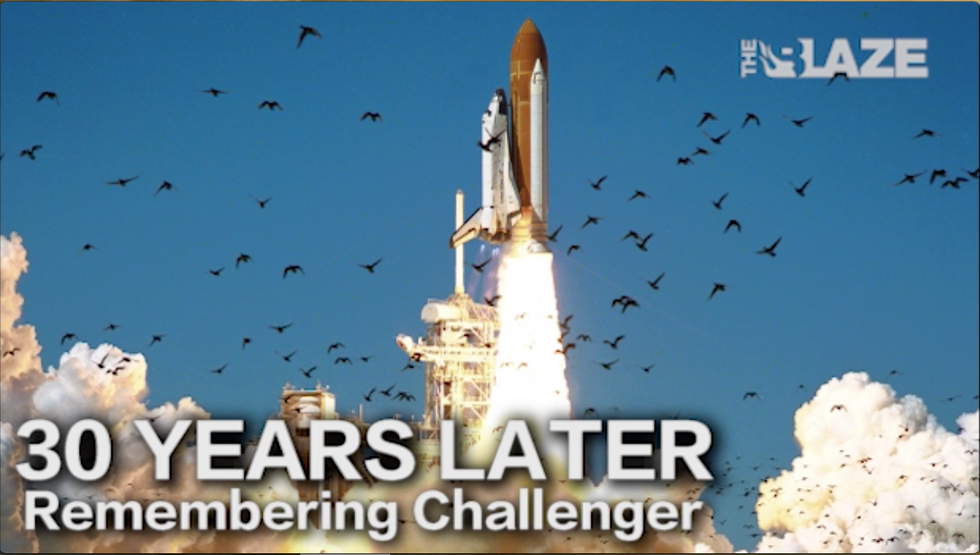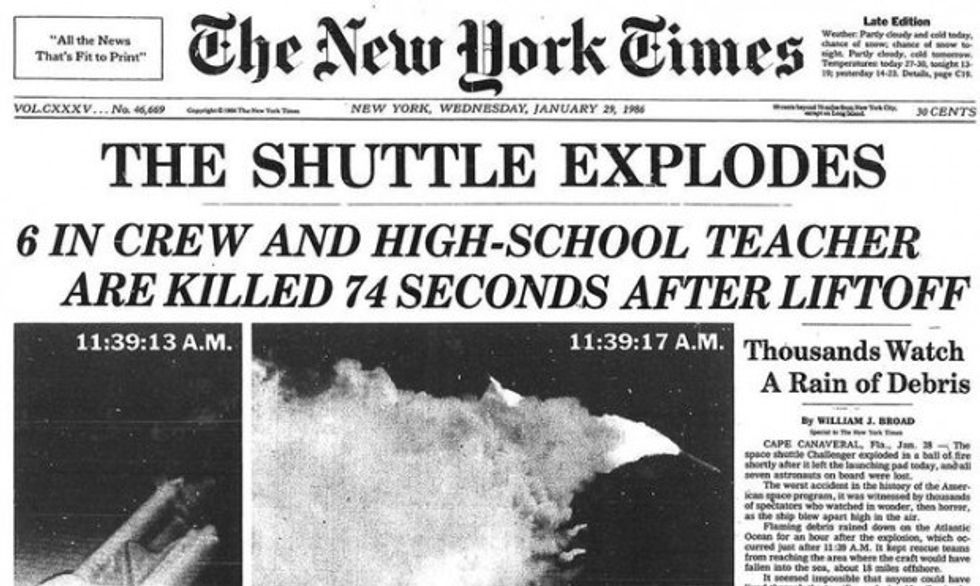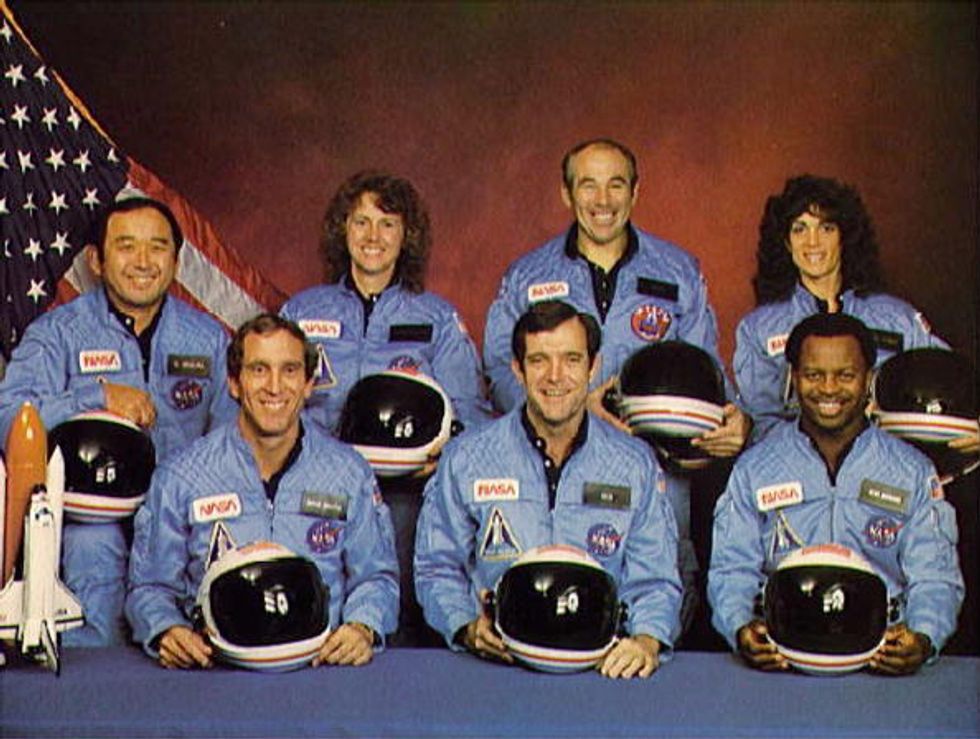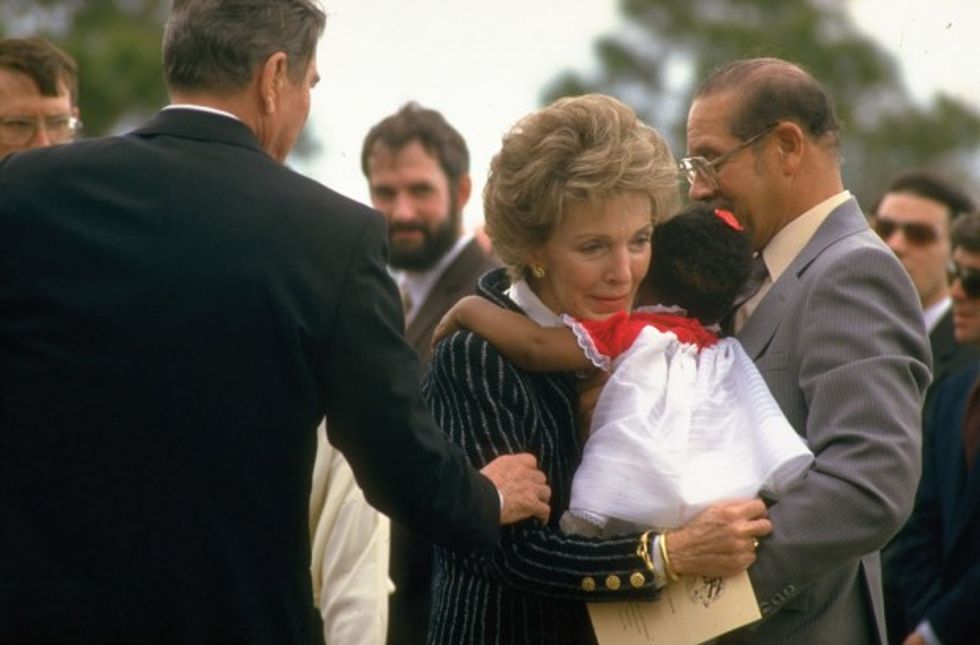
© 2024 Blaze Media LLC. All rights reserved.
On Jan. 28, 1986, just 73 seconds after taking flight, the space shuttle Challenger exploded before the eyes of millions, taking the lives of seven heroes
Today, on the 30th anniversary, NASA and many others are remembering them and paying tribute.

At 11:38 a.m. EST, the Challenger took off into a clear blue sky after numerous delays, which led many to conclude that it was a doomed mission from the start and shouldn’t have happened. One minute and 13 seconds later, all seven members of the crew had perished.
Millions of Americans watched in stunned silence as the spacecraft disintegrated over the Atlantic ocean.
The shuttle began to fall apart after an O-Ring seal in its right SRB, or solid rocket booster, failed at liftoff. The O-ring failure caused a breach in the SRB joint, allowing pressurized burning gas from within the solid rocket motor to reach the outside and impinge upon the adjacent SRB field joint attachment hardware and external fuel tank. This led to the separation of the right-hand SRB's field joint attachment and the failure of the external tank.
After a lengthy search-and-recovery operation, the crew compartment and many other vehicle fragments were recovered from the ocean floor. The exact timing of the death of the crew is unknown; several crew members are known to have survived the initial breakup of the spacecraft. The shuttle had no escape system, and the impact of the crew compartment with the ocean surface was too violent to be survivable.
The Challenger crew consisted of: mission specialist Ellison S. Onizuka, teacher-in-space participant Sharon Christa McAuliffe, payload specialist Greg Jarvis, mission specialist Judy Resnick, pilot Mike Smith, commander Francis “Dick” Scobee, and mission specialist Ron McNair.

On today’s 30th anniversary of the Challenger explosion, TheBlaze shares memories of the tragic day:
When President Ronald Reagan heard about the Challenger explosion the morning of the disaster, he was preparing to give the State of the Union address that very night.
He postponed the State of the Union speech till the following week and instead directly addressed the nation on the disaster.
His words were mournful but also inspirational and powerful, promising that this bleak event would not be the last of America's exploration into space — but rather a painful "part of the process" of expanding humankind's horizons.
Reagan's national address was written by Peggy Noonan and has been listed as one of the most significant speeches of the 20th century.
Three days later, Reagan and his wife Nancy traveled to the Johnson Space Center to speak at a memorial service honoring the crew members.

Reagan reminded the families and a nation of mourners, "Sometimes, when we reach for the stars, we fall short. But we must pick ourselves up again and press on despite the pain.”
Want to leave a tip?
We answer to you. Help keep our content free of advertisers and big tech censorship by leaving a tip today.
Want to join the conversation?
Already a subscriber?
more stories
Sign up for the Blaze newsletter
By signing up, you agree to our Privacy Policy and Terms of Use, and agree to receive content that may sometimes include advertisements. You may opt out at any time.
© 2024 Blaze Media LLC. All rights reserved.
Get the stories that matter most delivered directly to your inbox.
By signing up, you agree to our Privacy Policy and Terms of Use, and agree to receive content that may sometimes include advertisements. You may opt out at any time.


